Tangshan Port (Chinese:唐山港) is located in Tangshan City, Hebei Province, China. It is an artificial deep-water international seaport and the fastest growing port in China.
It is composed of three independent port areas: Jingtang Port, Caofeidian Port and Fengnan Port, which are managed separately, but are regarded as the same port for statistical purposes.
Tangshan Port is 400 nautical miles away from Incheon, South Korea, 680 nautical miles away from Nagasaki, Japan, and 935 nautical miles away from Kobe. It has smooth transportation routes with ore exporting countries such as Australia, Brazil, Peru, South Africa and India.
In 2019, Tangshan Port completed 667.4 million tons of cargo throughput, a year-on-year increase of 3.08%. The port’s cargo throughput ranks third in the world.
Tangshan Port is one of the fastest growing ports in the world and is listed as one of the top ten ports in China.
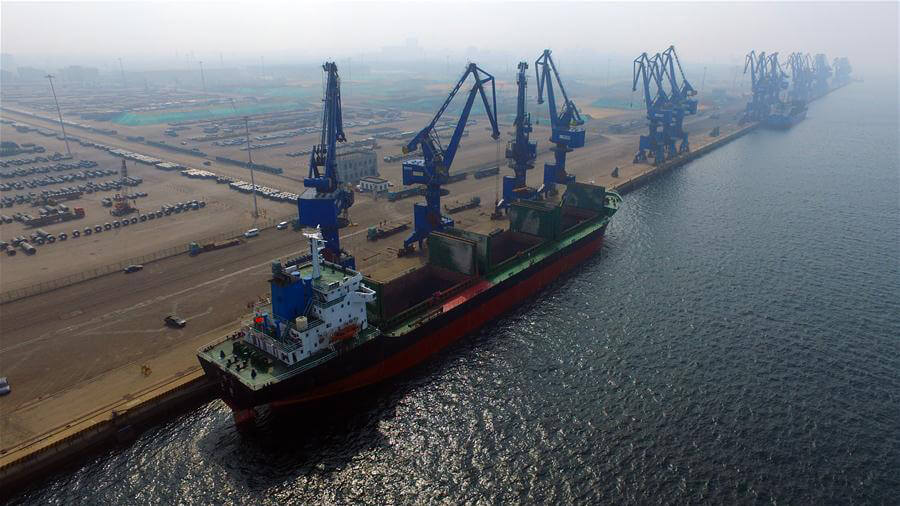
History
As early as 1898, Qinhuangdao, near Tangshan, was designated as a commercial port by the Qing government, mainly for the transportation of coal mines, and established the earliest port pattern.
- In November 1984, Tangshan City officially decided to build a port in Wangtan Town, Leting County. The provincial government allocated 50 million yuan from the energy construction fund as the start-up capital for Tangshan port construction.
- On August 10, 1989, Tangshan Port Jingtang Port Area started construction.
- In 1992, Tangshan Port Jingtang Port area opened to domestic navigation, and the development and construction of Caofeidian Port Area of Tangshan Port Caofeidian began to plan and demonstrate.
- In 1993, Tangshan Port Jingtang Port Area opened to international navigation. On July 17 of the same year, the two municipal governments of Beijing and Tangshan signed a joint port establishment agreement, and Tangshan Port was renamed Jingtang Port.
- In 2001, the throughput of Jingtang Port exceeded 10 million tons, making it into the ranks of my country’s 10 million tons of major ports in one fell swoop.
- On July 3, 2000, Tangshan Port Investment Co., Ltd. was established, and the reform of the management system was officially put on the agenda.
- In March 2003, the Caofeidian Port Area of Tangshan Port began large-scale development and construction. The original Jingtang Port Authority was restructured into Jingtang Port Co., Ltd.
- In 2005, following the principle of “one city, one port, named after the city”, the Provincial Party Committee and the Municipal Party Committee and Municipal Government decided to restore the name of Tangshan Port and Jingtang Port was renamed Jingtang Port Area. Caofeidian Port Area was included in the national “Eleventh Five-Year” port opening plan. In December of the same year, the Caofeidian Port Area of Tangshan Port began trial operation.
- In 2007, Caofeidian Port Group Co., Ltd. was formally established.
- In 2009, the transportation volume of the Jingtang Port Area of Tangshan Port exceeded the 100 million ton mark, making it the youngest 100 million ton port in China. And plan to implement the Tangshan Port Fengnan Port Project.
- In July 2012, the Caofeidian Port Area passed the national acceptance inspection. On August 28 of the same year, the Caofeidian Port Area of Tangshan Port Water Transport Port was officially opened to the outside world.
- In November 2015, Caofeidian Port achieved the first voyage of 400,000-ton Valemax ships.
- On November 5, 2016, Tangshan Port Fengnan Port District officially started.
- In 2019, the cargo throughput of Tangshan Port reached 557 million tons, and the container throughput was 2,943,400 TEU, which were 2.67 times and 10.64 times that of 2010.
- On November 25, 2019, the unmanned container truck supported by 5G technology completed the operation test at Jingtang Port and entered the trial operation stage.
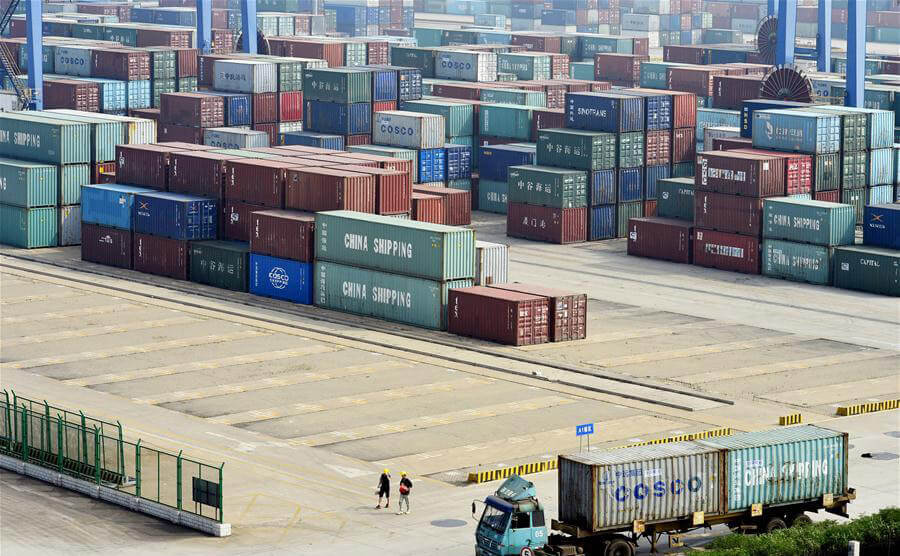
Jingtang Port
Tangshan’s port construction began in the 1980s. In 1993, Tangshan City and Beijing began to jointly build Jingtang Port.
The planned natural coastline length of Jingtang Port Area is 19 kilometers, and the planned coastline length is 45 kilometers. Nearly 150 berths of various types can be constructed.
The planned area of the port area is 88 square kilometers, the planned water area is 23 square kilometers, the land area is 65 square kilometers, and the planned waterway level is 200,000 tons.
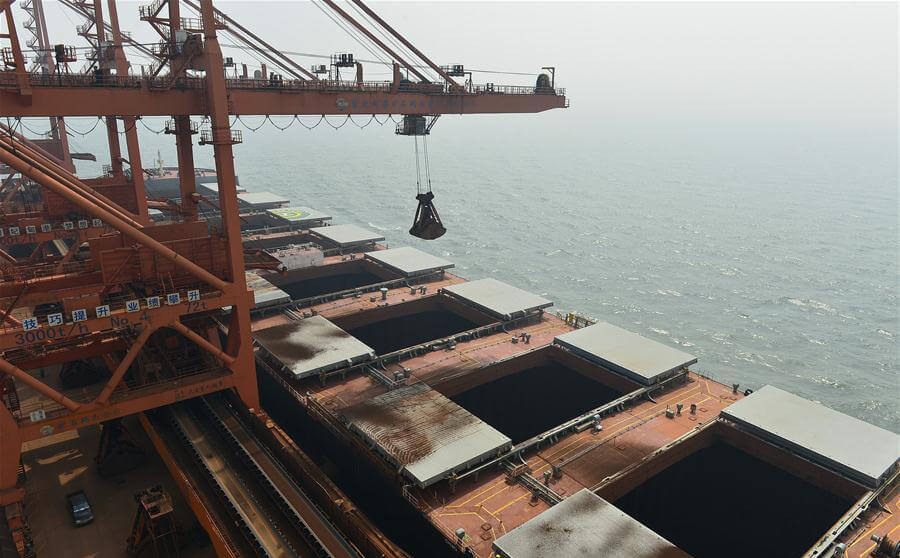
Fengnan Port
Fengnan Port Area is composed of the main port area and the estuary wharf area. The main port area has a planned land area of 40.68 square kilometers, a water area of 12.88 square kilometers, and a wharf coastline of 20.93 kilometers. It is planned to build berths from 20,000 to 100,000 tons. More than,
The coastline of the estuary wharf area is 4.5 kilometers long, and 25 to 30 berths for 3,000-ton bulk cargo and work ships are planned to be built.
The planned investment in infrastructure construction in the port area is 15 billion yuan, of which 3.8 billion yuan is expected to be invested in initial projects.
After the first phase of the port area is open to navigation, the throughput capacity will reach 12 million tons, and by 2020 it will exceed 25 million tons. After it is fully completed and open to navigation, the throughput capacity will reach 130 million tons.
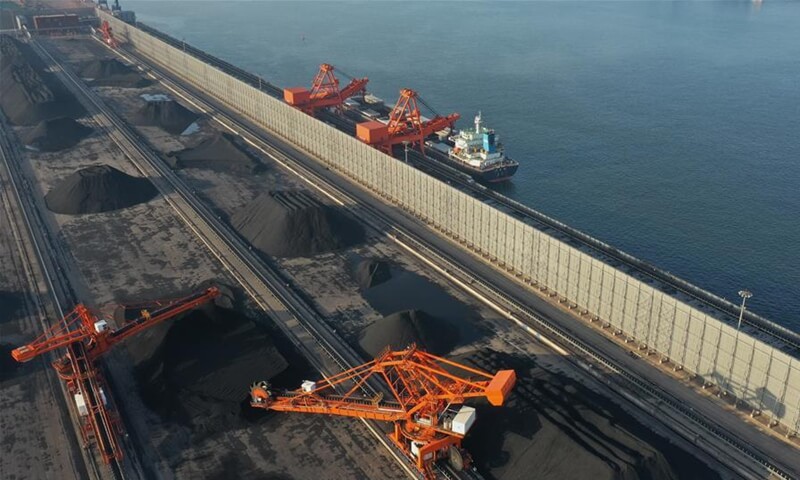
Caofeidian Port
The Caofeidian Port Area has a planned coastline of 122 kilometers, and 428 berths suitable for different functional needs can be built.
In 2014, the Ministry of Transport adjusted the Caofeidian port area plan again, planning a 124.9 km wharf coastline and 434 berths above 10,000 tons can be built.
The port coastline of Caofeidian can plan more than 260 berths, with an annual design throughput of more than 500 million tons.
The main business scope covers coal, ore, petroleum, steel, fresh aquatic products import and export, etc.
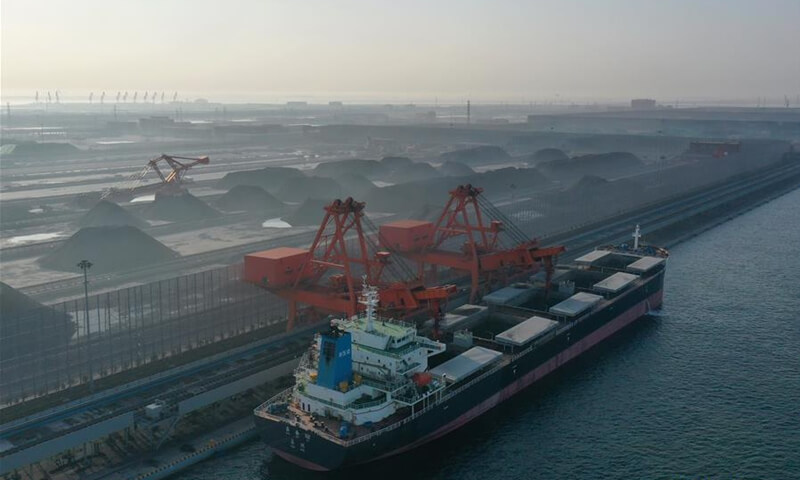
Tangshan Port Data
- Country
- China
- Region
- East Asia
- Status
- In use
- Official name
- 唐山港
- Other name(s)
- Jingtang port, Caofeidian port, fengnan port
- Location
- Tangshan City, Hebei Province, China
- Operator(s)
- Tangshan Port Group Co., Ltd.
- Opened
- 1989
- Sea area
- Bohai Sea
- Port type
- Deepwater seaport, Riverport
- Features
- Smart port, Artificial port
- Annual container volume
- 29.4 million TEU (2019)
- Annual cargo tonnage
- 656 million tons (2019)
- Industrialization date
- 1984
View Tangshan Port on Google Satellite Map
Google satellite maps allow you to see building details more clearly, including natural landscapes such as mountains, rivers, deserts, sea and man-made engineering buildings.
If you are very interested in this engineering building, it is a good idea to click below Google Map icon. We will help you jump to the corresponding location of this building or engineering on Google satellite map.





























































